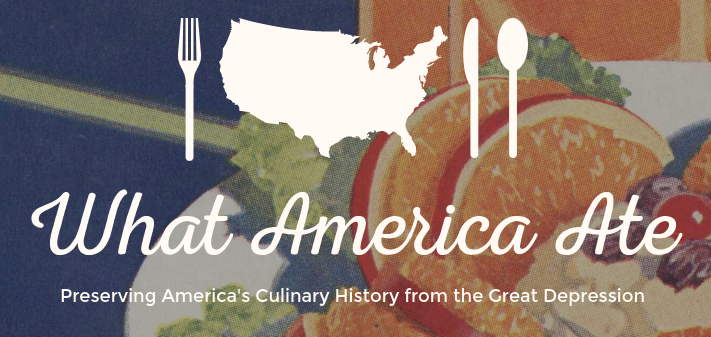
Launched in the spring of 2017, What America Ate, is an interactive website and online food recipe archive created by the collaboration among Digital Humanities professors and students from the University of Michigan. The project was funded by National Endowment for the Humanities with the mission to discover the everchanging diet and food habits of the American people in different historical phenomena during the Great Depression in the 1930s and 1940s.
The project contains a vast amount of Digitized content including 200 rare community cookbooks, rare promotional materials, flyers, and recipe booklets. When I was browsing through the project, I could not exactly find how long did it take to complete such a mammoth project. However, It is fair to assume that it takes years because of the sheer amount of content it has. Although, the data in the What America Ate project came from multiple sources, the majority of it comes from American Eat, a Depression Era project. In essence, What America Ate can be considered as an extended effort to understand different aspects of American Life during the era. The primary objective of the project is to make the historical record of food culture available to the masses using digital tools.
The interface of the project contains content in multiple formats to attract diverse users. There is a Browse section on the website with filters like Regions, Format, and Years to narrow down the browsing result to specific research interests. Also, a Basic and Advance Search functionality is available in the interface that facilitates searching from a few phrases, and keywords to perform complex field-specific searches with multi-select dropdown menus. A detailed recipe section is available to categorize Dishes based on time, course, and ingredients to attract foodies who are just browsing the project to find out what Americans used to eat in breakfast or as soup. Each recipe also contains a number of associated metadata such as description, date range, language, sources, citations, and many more! Furthermore, there is a map visualization to categorize recipes by different regions of America. The project also invites volunteers to transcribe the scanned images.
Although the What America Ate project is populated with thousands of materials, it does not contain all the contents that were available at that period. Instead, the project utilizes sampling to find out the representatives that epitomize different food traditions from different regions of America. One criticism that I have about the project is regarding sampling bias that is visible in the number of selected recipes by region. For instance, most of the recipes are from the far west and south which is more than any other region.
In conclusion, What America Ate is a captivating project that offers a great overview of America’s culinary history. Like many other DH projects, what I liked most is the inclusive characteristics of What we ate that serve and appeal to a broad range of audiences.
Please go and check it out!!! https://whatamericaate.org/



